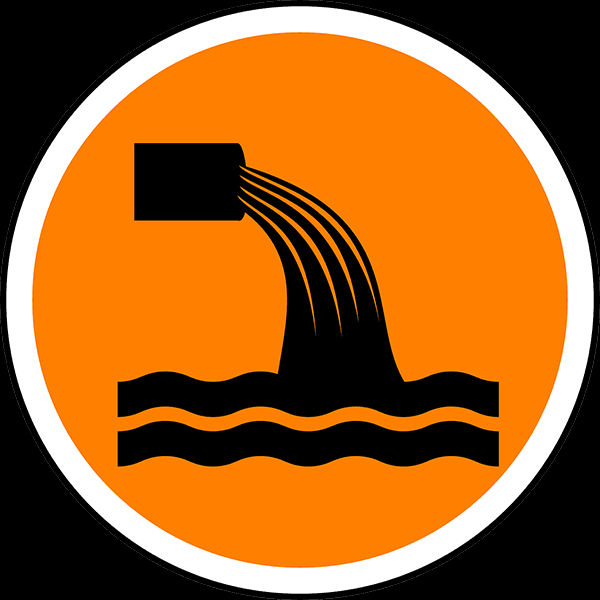10 Simple Techniques For Reclaim Waste
10 Simple Techniques For Reclaim Waste
Blog Article
The Ultimate Guide To Reclaim Waste
Table of ContentsReclaim Waste Can Be Fun For EveryoneAn Unbiased View of Reclaim WasteThe Reclaim Waste DiariesThe 4-Minute Rule for Reclaim WasteRumored Buzz on Reclaim Waste
Discover the kinds, incidents, and types of fluid waste. Domestic sewage waste refers to the waste and products from a residential septic system. This kind of waste is created by people in residences, institutions, and other structures. This only includes sewage-disposal tanks that have a drain area. The appropriate management and disposal of residential sewage waste need liquid waste to be moved to a sewage treatment plant where the proper methods and devices are related to detoxify and deal with waste.
Commercial waste usually includes possible dangers, such as flammable materials or a blend of fluid and solid waste products, and needs a more sophisticated and detailed disposal process. The disposal of industrial waste usually involves the filtering of waste prior to transport to guarantee risk-free and correct disposal. Industrial waste is produced from results and drainage of industrial processes and production.
This sort of waste can not make use of the same sewage management transport or processes as septic or business liquids. The commercial waste management process needs the examination and testing of fluid waste prior to it undergoes the disposal process (industrial wastewater treatment). Runoff waste is the liquid waste that originates from runoff and excess stormwater in highly booming locations or cities
Runoff waste can trigger contamination and flooding if not dealt with effectively. Making certain proper waste monitoring can prevent calamities and minimize environmental injury.
An Unbiased View of Reclaim Waste
Get in touch with PROS Providers today to learn more about our waste administration and disposal services and the appropriate ways to take care of the liquid waste you create.
(https://www.goodreads.com/user/show/183557660-leon-aube)Do you recognize what occurs to your water when you pull the plug, purge the toilet or drain pipes the cleaning machine? No? Well, it deserves understanding. This so-called 'wastewater' is not just a crucial resource yet, after treatment, will certainly be launched to our land, waterways or the sea. Utilized water from toilets, showers, bathrooms, kitchen area sinks, laundries and commercial processes is called wastewater.

water utilized to cool down machinery or tidy plant and equipment). here are the findings Stormwater, a kind of wastewater, is runoff that moves from agricultural and metropolitan locations such as roofings, parks, yards, roads, courses and gutters right into stormwater drains, after rainfall. Stormwater flows unattended directly to local creeks or rivers, at some point reaching the ocean.
10 Simple Techniques For Reclaim Waste
In Queensland, many wastewater is dealt with at sewage therapy plants. Wastewater is transported from domestic or industrial websites via a system of sewers and pump terminals, recognized as sewage reticulation, to a sewage treatment plant.
The Department of Natural Resources encourages regional governments regarding handling, operating and preserving sewerage systems and treatment plants. In unsewered locations, regional governments might need householders to set up specific or family sewer treatment systems to treat domestic wastewater from commodes, cooking areas, restrooms and washings. The Department of Natural Resources authorises making use of family systems when they are confirmed to be effective.
A lot of stormwater obtains no treatment. In some new neighborhoods, therapy of some stormwater to get rid of trash, sand and crushed rock has started utilizing gross pollutant catches. Wastewater therapy takes place in four stages: Gets rid of solid matter. Bigger solids, such as plastics and various other items mistakenly discharged to sewage systems, are removed when wastewater is travelled through screens.
Wastewater after that streams into large containers where solids work out and are gotten rid of as sludge. Oil and scum are skimmed from the surface. Uses little living organisms knows as micro-organisms to break down and eliminate remaining dissolved wastes and fine particles. Micro-organisms and wastes are included in the sludge. Removes nitrogen and phosphorus nutrients that could cause algal flowers in our waterways and threaten aquatic life.
3 Simple Techniques For Reclaim Waste
Nutrient elimination is not offered at all sewer therapy plants since it needs costly specialist devices. It is ending up being more common in Queensland. Clear fluid effluent generated after therapy may still consist of disease-causing micro-organisms. If this effluent is launched right into waterways such as rivers or the sea, the micro-organisms will at some point pass away out.

Many wastewater flows right into the sewerage system. Under the Act, neighborhood federal governments provide approvals and permits for environmentally pertinent activities (Ages) involving wastewater launches that might have a neighborhood impact.
Getting The Reclaim Waste To Work
Or else, samples are considered research laboratory analysis. Usually several examinations are required to establish the levels of each of the various pollutants such as oils, hefty steels and chemicals in water. Tracking offers valid details concerning water quality and can validate that permit problems are being fulfilled. The info obtained through tracking gives the basis for making water high quality decisions.
Report this page